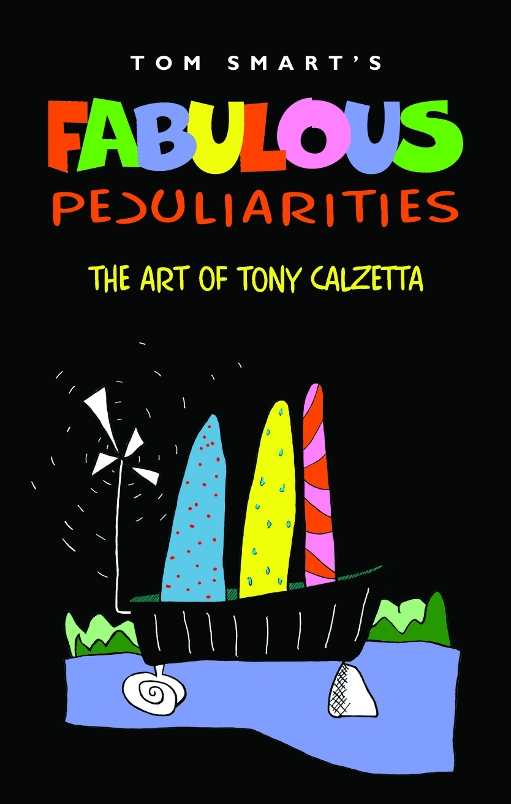Fabulous Peculiarities
The Art of Tony Calzetta
- 2015 INDIES Finalist
- Finalist, Art (Adult Nonfiction)
The book’s true focus is not just the art—it’s the story behind the art—and Calzetta’s influences and motivations are revealed.
Tom Smart profiles the art and career of a notable artist in the penetrating analysis Fabulous Peculiarities: The Art of Tony Calzetta. The cover is based on an image by Calzetta called SNOOP, Protégé of Snap, and its vibrant, contrasting colors demand attention, setting the stage for a closer examination of this, and his other artworks.
Calzetta’s art is of the type that is often immediately dismissed with the standard “My kid could do that!” line. But hidden in its simplicity are scores of decisions and experiments involving color, composition, and attempts to bring a dynamic sense of action to two-dimensional paintings.
Smart discusses Calzetta’s early development in a way that probes deeper into the intent and meaning behind what appear to be simple, single-line drawings: “He practised a form of automatism—automatic drawing—that enabled him to put down in as immediate a way as possible his unconscious.”
The book is not so much a biography as it is a retrospective on the artist’s career, and as such, it traces his love of drawing, which evolves into painting, sculpture, and later, collaborations with other authors on innovative two- and three-dimensional book projects.
In order to appreciate any art—but particularly Calzetta’s deceptively simple, often cartoonish-looking works—one needs a good guide. Smart proves adept and eminently capable of communicating why Calzetta made the choices he did, and why they are worthy of praise. Smart does so while mostly avoiding stereotypical art critic hyperbole, and the book is well designed, with plenty of photographs and reproductions of Calzetta’s work. It’s a simple enough feature, one that would seem a requirement for any art book, but one that often goes underutilized.
The one drawback of Fabulous Peculiarities is, unfortunately, a significant one—with the exception of the cover, there are no color reproductions to be found. While the black and white images are fascinating in their own right, they eliminate a whole dimension of Calzetta’s art that is discussed throughout the book. Budget constraints often prohibit color interiors, but in a book focusing on an artist to whom color is a critical component, its absence is keenly felt and makes the book feel slightly less than complete.
Still, the book’s true focus is not just the art—it’s the story behind the art. Calzetta’s influences and motivations are revealed, and even those who’ve never heard of him, or who wouldn’t ordinarily be attracted to his simple but thoughtful work, will find themselves captivated by Smart’s look behind the curtain.
Reviewed by
Peter Dabbene
Disclosure: This article is not an endorsement, but a review. The publisher of this book provided free copies of the book and paid a small fee to have their book reviewed by a professional reviewer. Foreword Reviews and Clarion Reviews make no guarantee that the publisher will receive a positive review. Foreword Magazine, Inc. is disclosing this in accordance with the Federal Trade Commission’s 16 CFR, Part 255.

